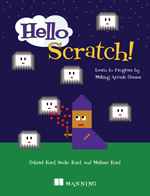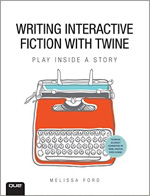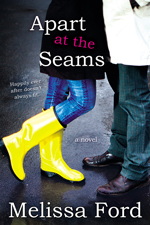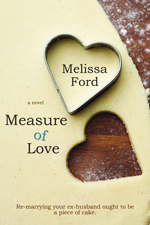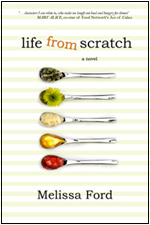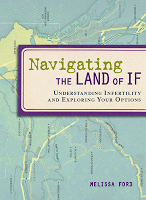MFA Sunday School (Eleven: Building a Realistic Setting)
![]() Welcome to MFA Sunday School, a once-a-week, free, online writing workshop. MFA Sunday School posts are uploaded on Sunday mornings, though you can read them or participate any time — the comment section is always open for people to post a link to their work or ask a question. You can subscribe to blog posts via the RSS feed, or look for them under the category heading “MFA Sunday School.” If this is your first time in “class,” you may want to jump back to the first post in the series in order to understand how things work, or peruse all of the past lessons as well as a glossary of terms by reading the MFA Sunday School Glossary and Course Archives.
Welcome to MFA Sunday School, a once-a-week, free, online writing workshop. MFA Sunday School posts are uploaded on Sunday mornings, though you can read them or participate any time — the comment section is always open for people to post a link to their work or ask a question. You can subscribe to blog posts via the RSS feed, or look for them under the category heading “MFA Sunday School.” If this is your first time in “class,” you may want to jump back to the first post in the series in order to understand how things work, or peruse all of the past lessons as well as a glossary of terms by reading the MFA Sunday School Glossary and Course Archives.
Class, today we have a guest lecturer; a fellow MFA who utilizes setting in the most amazing ways in her blog posts (so I can only begin to imagine what I’ll encounter when I finally get to read her book). Please welcome Wordgirl.
Wordgirl is the author of Bloodsigns — the current incarnation of a blog she originally began in 2007 in order to stretch her writing muscles, overcome writer’s block, and document her struggle with infertility that began in 2004. She received her MFA in Fiction from the University of Montana in 1998 and has taught composition and creative writing as an academic gypsy at various places: The University of Montana, Salish Kootenai College, The University of Minnesota, but most recently she spent 8 years teaching at a local Community College, a tenured position which she left in order to pursue IVF treatments, parent her stepson and finish her novel. In 2009 she gave birth to her daughter. She has an unpublished collection of short stories of the same name as her blog, numerous personal rejection letters, and a novel in progress about the 1862 Dakota Uprising.
[Wordgirl steps up to the lectern to enthusiastic applause.]
When I got to Thirty-eight Street, I crossed over to the south side and walked along the bar fronts there. Cars were parking in front of the bars, and men and women were getting out to go in and drink. Behind the bars were sheds and then rows of small new houses built on new streets and beyond that an empty drive-in movie and a railroad spur and then the town stopped and the fields of winter wheat began. – From Richard Ford’s Wildlife
I believe it was Alice Walker who once talked about how crafting her novels and characters wasn’t so much about placing these created personas in a deliberately crafted scene so much as it was listening to the characters as they came to her — and follow their voices into the lives they were to lead. This seems to dovetail with the great fiction teacher John Gardner’s urging in his book The Art of Fiction that the creation of fiction is that of a vivid and continuous dream — and it is our work as writers to enter that dream — and continue to build a believable world and a believable set of characters so that our readers are swept up in the current of events that unfold — and in their being swept up in that narrative arc it’s our hope that they witness this transformation of our protagonist — and by witnessing that change — following that journey — become emotionally moved by it — so that when they leave our work, put it down, the world and the characters linger like a dream that they can’t shake upon waking.
In class so far you’ve asked yourself some questions about your own writerly voice, your characters — and now of course that you have these characters in hand the question becomes how to place them in a world — a setting, scenes … the bones of the fictional world so to speak. I’m going to be addressing the short-story here in particular, only because it was my focus for a number of years — and because I believe if you can write a short story you have every tool you need to move on to a novel.
The two short stories that I wrote for admission into my MFA program were stories that were loosely veiled pieces of non-fiction. At the time, it was easiest for me to follow the bones of an event that had actually happened to me (for in those days I took the Hemingway quote of ‘write what you know’ far too seriously) but what I can see in looking back on those pieces is that they were first drafts that were never allowed to develop fully — they did not have all of the essential components a piece of fiction needs: plot, character, tone, and form. “Plot is what happens in a narrative; character is who it happens to (or who makes it happen); and tone is what it sounds like. Form is the pattern of its assembly, its arrangement, structure and design” (Bell 25). … I had done the first part — which is I had sat with the characters and I had removed my inner critic and just allowed myself to enter the dream of what would happen if these characters were sitting with one another, and I imagine, for some of you — that’s where you are now.
The next step is to understand the importance of setting/scene in a piece of fiction (which is that matter of form/assembly)– and to begin to put them to work in your own piece. I like how Madison Smartt Bell puts it in his book Narrative Design — he says that the first part of the process of writing is imagination (which is where we are) — and the next, he suggests, is rendering — which is where we’re heading.
And while we’re at it — I can’t think of a better book to recommend in terms of structure than Bell’s book Narrative Design — which I still use. In it he revisits the triangle — do you recall this from any English Literature class? Imagine we’re beginning at the base of the triangle’s slope — this is the character’s beginning. As we follow the narrative, events happen, characters arrive and depart until we arrive at the critical moment of the story/novel — and then we have the falling action and resolution.
The bones of a story, the skeleton is comprised of scenes. Scenes are what determine the pace — dialogue notoriously speeds things up, exposition (and detailed descriptions of event) slow things down. Take a look at the excerpt from the Ford novel Wildlife that I included above. It seems deceptively simple at first because we have only a single character — and their interior monologue in the first person — but notice the vivid descriptions of Joe’s world in the last few sentences– what they reveal about his mindset, what he notices, what tone it sets — how it grounds us in a particular emotional place for what might come next in the novel.
Whether you happen to already have scenes in hand or are just working with characters this is a terrific exercise that allows you to see how detail anchors us in scene/ and allows for our readers to continual suspend their disbelief (that vivid and continuous dream idea again.)
Homework: I love the exercise from David Ray in What If? Writing Exercises for Fiction Writers — The Five-Highlighter exercise. Using five different colored highlighters, mark a text (first a piece of fiction that you admire and consider successful, and then your own) with different colors for each sense impression, for example blue for visual, red for auditory, green for taste etc. Find passages that use all five senses — and then see how your own scenes match up.





